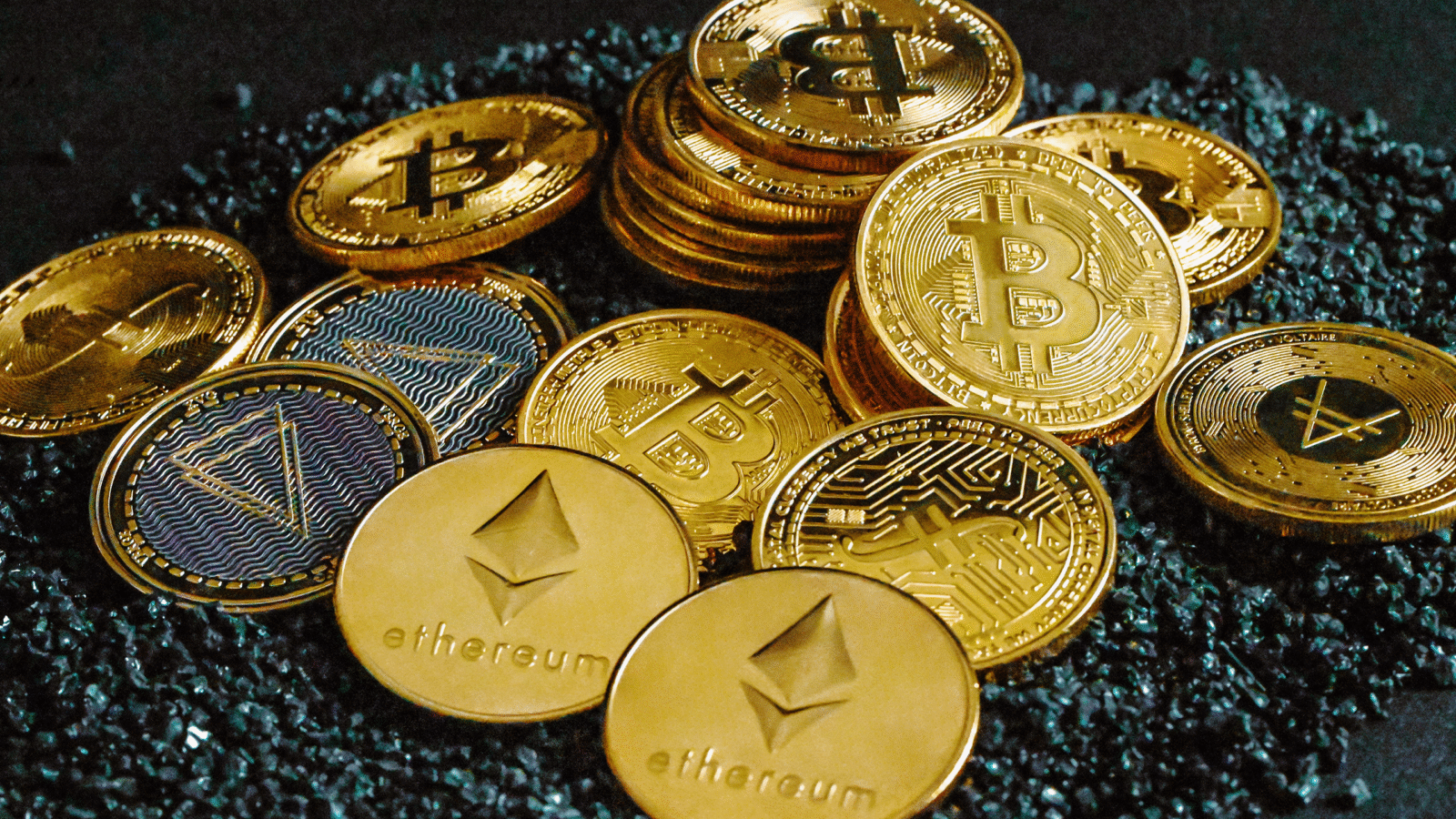Good morning and happy Wednesday.
A proposed ETF may be a thesis on honor among thieves — at least according to its provocative name.
The Tuttle Capital Government Grift ETF (GRFT), whose initial prospectus was filed with the Securities and Exchange Commission last week, would invest with a focus on government insiders and political influence. Like the Unusual Whales Subversive ETFs, the fund considers the holdings reported by members of Congress. But the Grift ETF would also seek out ties to the president and analyze speeches, social media posts and interviews to help choose the 10 to 30 positions it plans to hold.
The fund is actively managed, presumably because there isn’t a grift index, yet.
Fixed Income ETF Assets Hit Record $2T

What do fixed income ETFs have in common with the Department of Government Efficiency?
The answer, given away by the headline above, is $2 trillion. Not only is that the amount the Elon Musk-convened group (hoped to) cut from the federal budget, but it’s also the size of the US fixed income exchange-traded fund market. On a fun note, 2 trillion is also the most recent estimate of the number of galaxies in the observable universe. The US fixed income ETF business reached that milestone in June, following a flood of assets into products this year.
“$2 trillion is pretty noteworthy,” said Matthew Bartolini, head of Americas ETF research at State Street Investment Management. “It’s not being fueled by one single factor — there are multiple drivers.”
Ramping Up
With $186 billion flowing into fixed income ETFs in the first half of 2025, the products got 34% of the total ETF sales, Bartolini noted. “That is double what their market share would indicate.” Fixed income ETFs also saw record sales in June, taking in $18 billion, with only one subcategory, long-term government bond ETFs, seeing net outflows, he said. The most obvious factor in recent demand for fixed income ETFs is yield, said Daniel Sotiroff, senior analyst on the passive strategies team at Morningstar. Compared with the yields in the 2010s, when interest rates were near zero, the 4% or 5% yields today are a big improvement, he noted. “The yield on my savings account is pretty dismal,” he added. “That makes even something like a Treasury bill ETF more attractive.”
Other contributors to growth overall are advisors outsourcing investment decisions via model portfolios and asset-allocation products, as well as an increased appetite for income, he said. “We used to talk about dividend ETFs six or seven years ago … but increasingly, that conversation is going toward fixed income funds.”
According to Morningstar Direct data, these are the fastest-growing fixed income ETFs this year through May:
- By net sales, the iShares 0-3 Month Treasury Bond ETF led the way, taking in $17 billion, followed by the SPDR Bloomberg 1-3 Month Treasury Bill ETF, at $7 billion, and Schwab Mortgage-Backed Securities ETF, at $5 billion.
- But by organic growth, or net flows as a proportion of total assets, the biggest seller was the Schwab Mortgage-Backed Securities ETF, at over 10,000% growth, followed by the T. Rowe Price QM US Bond ETF, at 1,200%, and JPMorgan BetaBuilders US Treasury Bond 1-3 Year ETF, at 930%.
Actively Recruiting: Active management is also behind much of the recent demand and product development. Almost all of Vanguard’s fund launches over the past couple of years have been fixed income ETFs, many of which are active, Sotiroff noted. That firm filed this week for the Vanguard High Yield Fixed Income ETF, following recent launches in that category by Capital Group and JPMorgan. Unlike with equities, fixed income has been an area where a significant number of shops have been able to outperform, Sotiroff said.
“It is an area where active managers can actually add some value,” he added.
Are Gambling ETFs Worth the Bet?
Can clients hit the jackpot investing in gambling-themed ETFs?
The global online gambling industry recently reached more than $70 billion in revenue, according to the American Gaming Association, with online casinos and sports betting driving growth after a 2018 Supreme Court decision opened up the industry to some 38 states and the District of Columbia. The boom has even fueled Superbowl ads and new smartphone apps that let people parlay directly from their pockets. Still, experts say ETFs tracking the burgeoning industry remain small compared with more traditional options and that their success depends largely on broader economic factors and market swings.
“There was a belief for a long time that gaming was, in and of itself, recession-proof, and that people are always going to smoke, drink and gamble,” said Phil Blancato, Osaic’s chief market strategist. “The pandemic changed that narrative.”
Card Up Your Sleeve
The classic “Atlantic City model” of driving down the Jersey Turnpike to gamble has now been replaced by widespread online accessibility, Blancato said. In turn, that has opened up the market to older Americans who don’t want to travel, and younger, more chronically online ones. Year-to-date figures back up the industry’s booming status:
- Roundhill Investments’ Sports Betting & iGaming ETF (BETZ) is up 25.33%.
- Invesco’s Next Gen Media and Gaming ETF (GGME) is up 19.88%.
That boon has also led to an influx of new products, like Roundhill’s ETF, which launched in 2020 during the height of the pandemic. “Looking ahead, we expect further growth through mobile gaming and wagering,” said Dave Mazza, Roundhill’s CEO. “We think BETZ is best used as a satellite exposure.”
For Blancato, gambling ETFs are best utilized in small doses — no more than a 3% or 4% allocation — and in bullish markets environments.
Bankroll the Dice. One thing that could be a game-changer is integration with traditional banks. As gambling becomes more integrated into retail investors’ everyday lives, Blancato predicts these ETFs will have stakes in banks in the near future. “There’s going to be crosscurrents between your banking account and your gaming account,” he said. “If there’s a crossover into the mainstream by making [gambling] part of your greater financial picture, I think it could change the narrative.”
Crypto ETFs Are Diversifying. Can Demand Keep Up?

What the world needs now is … another crypto ETF?
That may be what asset managers are hoping. The list of would-be products seeking the Securities and Exchange Commission’s approval keeps growing. One of the latest proposed ETFs, from KraneShares, would invest across a considerable range of crypto assets. That fund, the KraneShares CF Large Cap Crypto Index ETF, for which the firm filed a registration statement for SEC review last Friday, would hold bitcoin, ether, XRP, Solana, Dogecoin, Cardano and Hedera, according to the initial prospectus. And another firm, Bitwise, filed last week for three products that would expand its crypto coverage: The Bitwise Bitcoin & Ethereum ETF; Bitwise Aptos ETF; and Bitwise Dogecoin ETF. In the short history of the crypto ETF market, sales and assets have been dominated by a few players, most notably BlackRock, whose iShares Bitcoin Trust ETF represents nearly $75 billion. That hasn’t stopped companies from developing new ETFs, but there is a question about demand.
“[For] your average investor, only 8% are concerned about adding crypto products to their portfolios,” said Stephen Caruso, associate director of wealth management at Cerulli Associates.
Big Plans
The SEC has yet to approve a range of spot-price crypto ETFs. Regardless, the product space has branched out since the first bitcoin ETFs were approved in 2024. There are iterations of income-focused bitcoin ETFs, for example, and firms are preparing funds that offer staking capabilities, in the case of Solana and other crypto assets. There is increasing interest among retail investors in crypto ETFs broadly, and that can translate to opportunities for conversation with financial advisors, Caruso said. For example, about 20% of retail investors who haven’t worked with advisors before, but are strongly considering doing so, are interested in crypto ETFs, he said.
Survey data show that demand for crypto ETFs varies by age and wealth:
- People under 40 show the most interest, as do those with less than $250,000 in investable assets — demand decreases considerably above that amount but ramps up again for those with $5 million or more, according to Cerulli.
- Among Gen Zers and millennials who are already ETF investors, roughly half have some exposure to crypto ETFs, figures from a recent Nasdaq report show.
Competing for That Coin: “Crypto is not one-size-fits-all, and most of these digital assets have drastically different use cases and profiles … Ultimately, you want to understand why you are holding any digital asset and how it fits into your overall portfolio,” said Kevin Feig, founder of Walk You to Wealth and previously head of risk at crypto exchanges Coinbase and Kraken. “More ETF options from multiple providers will likely lead to price competition and expense-ratio reductions, which is always a win for individual investors.”
Extra Upside
- Token of Appreciation: Robinhood adds ETF and stock tokens in Europe.
- What’s at Stake: Rex-Osprey is set to launch a Solana ETF with staking.
- ETF Central Lets You Screen, Compare, And Analyze 4,300+ ETFs Instantly. Track flows, uncover market trends, and access expert-driven ideas — all on a powerful platform backed by the NYSE and powered by Trackinsight ETF data.*
* Partner
ETF Upside is written by Emile Hallez. You can find him on LinkedIn.
ETF Upside is a publication of The Daily Upside. For any questions or comments, feel free to contact us at etf@thedailyupside.com.
